While Hong Kong may seem fast-paced and complex at first glance, getting around is surprisingly straightforward, even for first-time travellers. With one of the most efficient public transport systems in the world, the city offers a mix of fast, reliable services and slower, scenic options for those who prefer to travel above ground. Whether you’re heading from the airport into the city or exploring neighbourhoods on foot, here’s how to navigate Hong Kong with ease.
Also read: 6 Hidden Gems in Hong Kong that Every Singaporean Must Discover
Octopus Card: The one thing you shouldn’t travel without
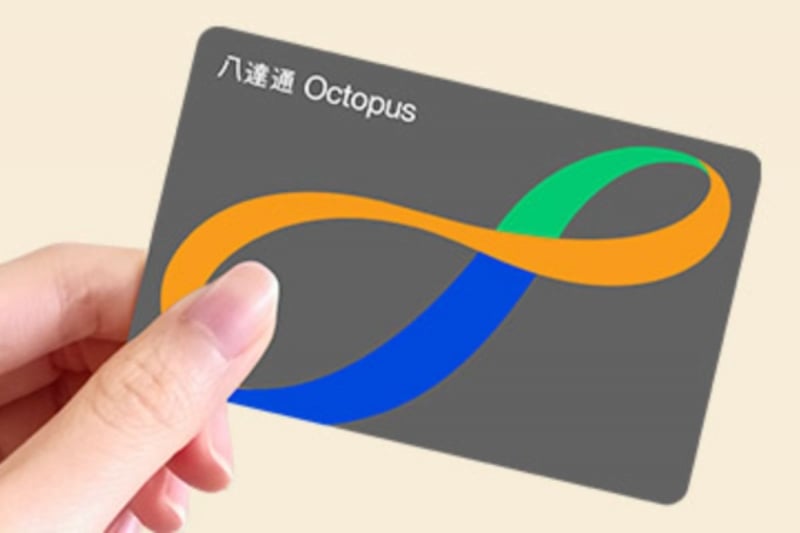
Image Credit: Octopus Cards Official Website
Before diving into the different transport options, it’s worth starting with the essential: the Octopus Card. This rechargeable smart card is used across nearly all forms of public transport in Hong Kong, including the MTR, buses, ferries, trams, and even some taxis. It also works at convenience stores, vending machines, and selected attractions.
There are two main options for visitors:
-
Tourist Octopus (physical card): HK$39 and available at MTR stations, airport counters, or convenience stores like 7-Eleven.
-
Mobile Octopus (digital): Add it to your smartphone or smartwatch via the Octopus App for Tourists. This option lets you check your balance and top up instantly using a credit or debit card.
Tripzilla Tip: Keep your Octopus card easily accessible because you’ll be using it often. And if you choose the physical version, it makes for a practical souvenir too!
Getting to and from the airport
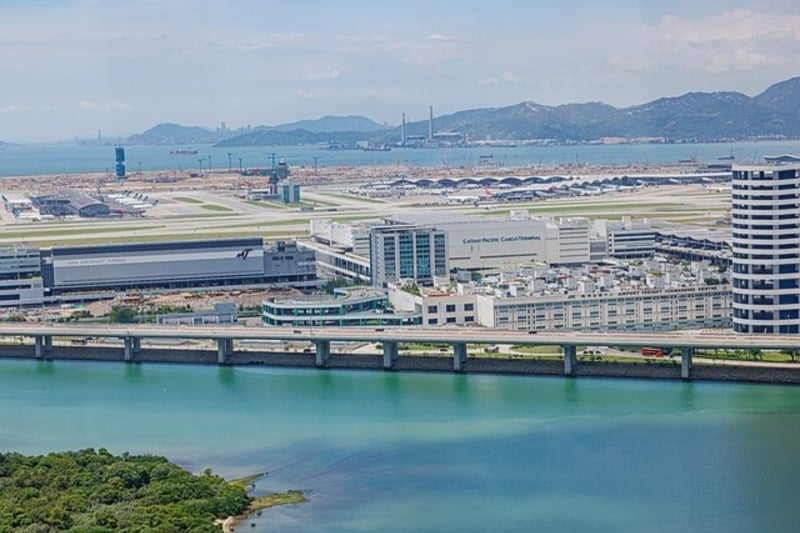
Image Credit: Wikimedia Commons
Once you’ve picked up your Octopus Card, you’re ready to start moving. And for most travellers, that journey begins at the airport. Whether you’re heading straight to your hotel or planning to explore right away, here’s how to get into the city smoothly from Hong Kong International Airport.
Airport Express:
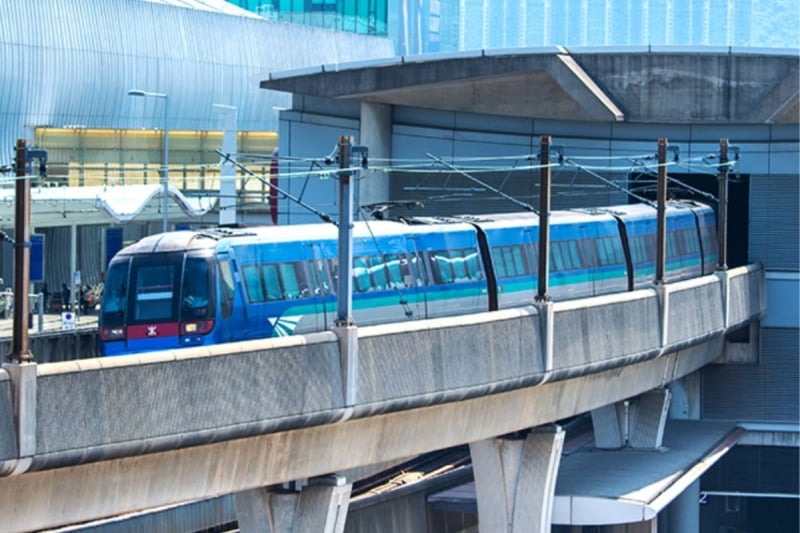
Image Credit: Hong Kong International Airport Official Website
This high-speed train is the fastest way to reach the city. It takes just 24 minutes to get to Hong Kong Station, with stops at Tsing Yi and Kowloon along the way. Trains run every 10–15 minutes and offer free Wi-Fi, luggage racks, and in-town check-in services for selected airlines.
Fares: HK$115 to Hong Kong Station (cheaper if you use an Octopus card or group ticket).
Buses (Airbus ‘A’ Routes):
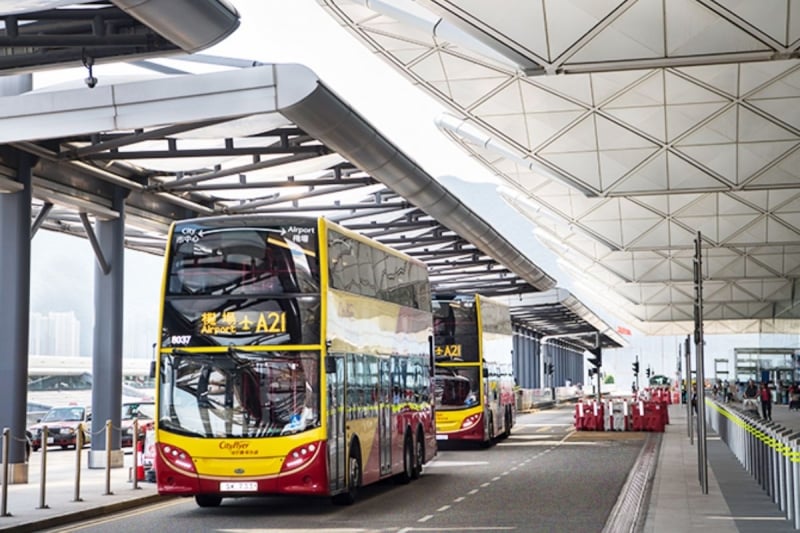
Image Credit: Hong Kong International Airport Official Website
A more affordable option, airport buses cover a wide range of destinations across Hong Kong Island, Kowloon, and the New Territories. They are air-conditioned and equipped with luggage space.
Tripzilla Tip: Look for signs to “Airbus” services just outside the Arrivals Hall.
Taxis:
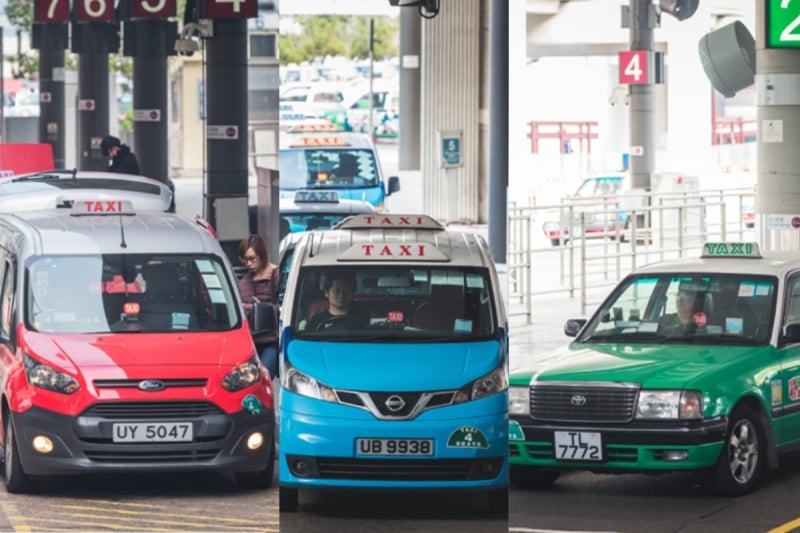
Image Credit: Hong Kong International Airport Official Website
Taxis are available outside the Arrivals Hall and are colour-coded by region:
-
Red for most urban areas (Hong Kong Island, Kowloon)
-
Green for the New Territories
-
Blue for Lantau Island
All taxis are metered and regulated, but most only accept cash.
Also read: Hong Kong Itinerary: Your Perfect 3-Day Long Weekend Guide
MTR (Mass Transit Railway): Fast, clean, and reliable
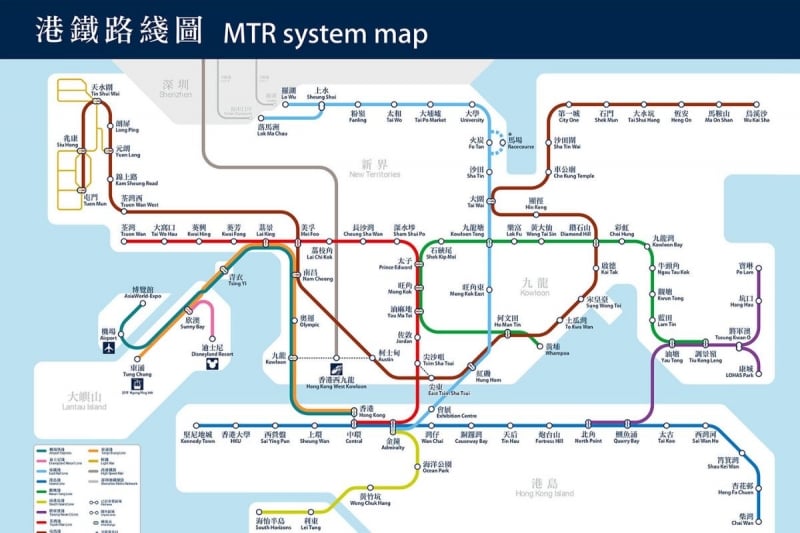
Image Credit: Hong Kong Tourism Board Official Website
The MTR is Hong Kong’s primary train network and the most efficient way to travel between major districts. With over 150 stations across Hong Kong Island, Kowloon, and the New Territories, it covers almost everywhere you’re likely to go.
Trains are air-conditioned, arrive every few minutes, and are clearly signposted in both English and Chinese. Fares typically range from HK$5 to HK$30 depending on distance, and are relatively affordable compared to other major cities. For visitors, a 24-hour Tourist Day Pass is available for HK$65 and offers unlimited rides within that time frame.
TripZilla Tip: Avoid weekday rush hours (7:30–9:30am and 5–7pm) if you can. For real-time train updates and route planning, download the MTR Mobile app or HKeMobility.
Ferries: Scenic and efficient
Ferries are a practical and enjoyable way to get across the harbour or explore Hong Kong’s outlying islands. They’re especially useful if you’re staying near the Central Piers or planning a day trip outside the main city.
Star Ferry (Central ↔ Tsim Sha Tsui / Wan Chai):
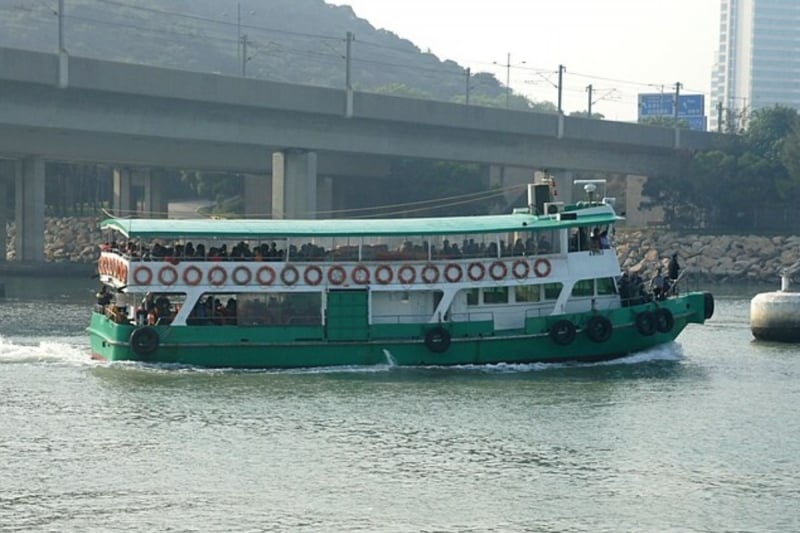
Image Credit: Wikimedia Commons
One of Hong Kong’s most iconic transport experiences, the Star Ferry has been crossing Victoria Harbour since 1888. It’s slower than the MTR, but offers skyline views that make it well worth the extra time. Fares go for around HK$4–7 depending on deck and day.
Ferries to Outlying Islands:
If you’re in the mood for a slower day trip, ferries from Central Pier also connect you to outlying islands like Lamma, Cheung Chau, Peng Chau, and Discovery Bay. These routes offer a welcome change of pace, whether you’re heading to a beach, hiking trail, or seafood lunch spot. Most destinations are served by both standard and fast ferries, with the latter shaving down travel time for a slightly higher fare. Tickets are sold at the pier on the day of travel, but it’s best to arrive early on weekends when crowds are common.
Trams & the Peak Tram: Scenic rides through the city
Hong Kong Island Trams (“Ding Dings”)
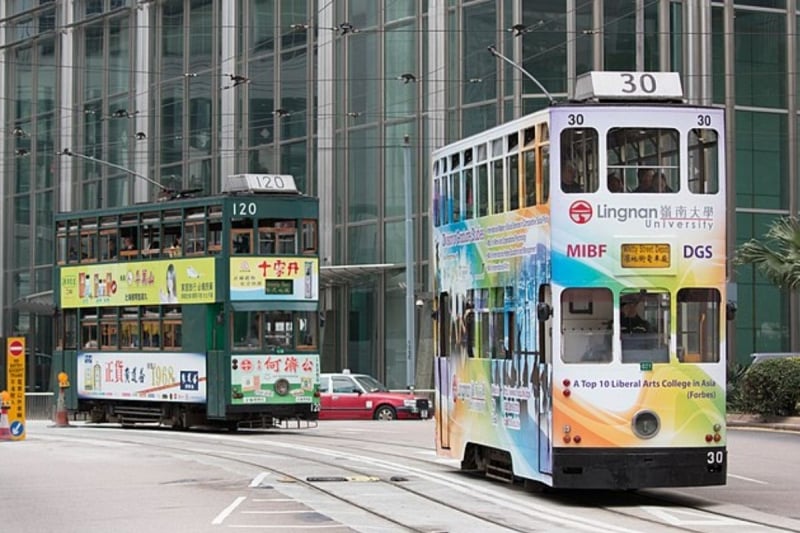
Image Credit: Wikimedia Commons
Running along the northern edge of Hong Kong Island from Kennedy Town to Shau Kei Wan, these double-decker trams are one of the city’s most distinctive and affordable transport options. At just HK$3 regardless of distance, they’re ideal for a slow, scenic journey through neighbourhoods like Central, Wan Chai, and Causeway Bay. When boarding, remember to enter at the back and exit at the front, where you’ll tap your Octopus Card or pay exact change.
Tripzilla Tip: Grab a seat on the upper deck. The views, especially through the older parts of the island, are well worth it.
Peak Tram (to Victoria Peak)
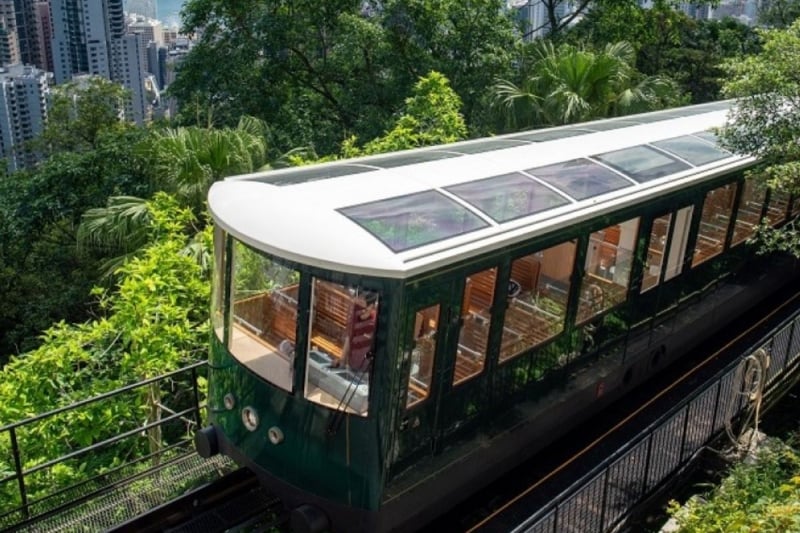
Image Credit: Peak Tramways Official Website
To reach Hong Kong’s highest point, the Peak Tram offers a steep, iconic ride up to Victoria Peak. This historic funicular railway was upgraded in 2022 and now features larger, more stable cabins. It’s a popular attraction and queues can get long so try going early in the morning or late in the afternoon. Fares go for about HK$62 one way and HK$88 for a round trip
Tripzilla Tip: Sit on the right side on the way up for the best harbour views.
Buses and minibuses: Affordable access to harder-to-reach areas
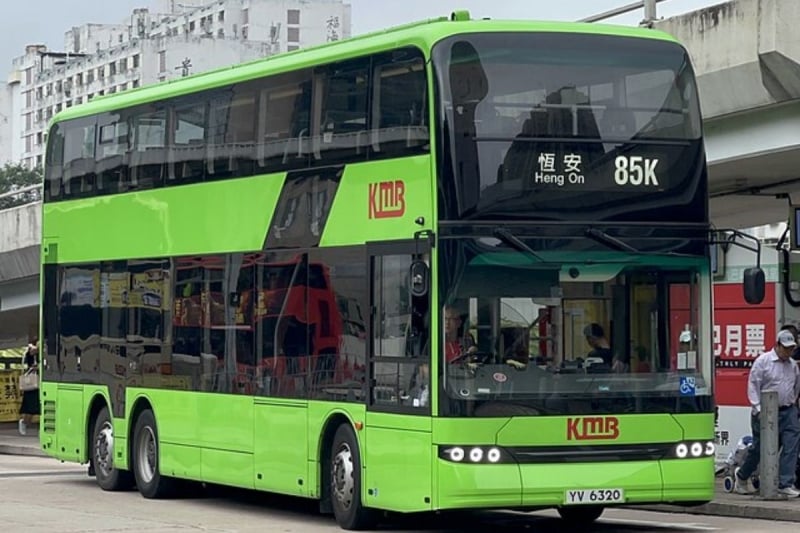
Image Credit: Wikimedia Commons
Hong Kong’s bus network is extensive and reliable, offering an easy way to reach areas not directly served by the MTR. Operated by several major companies, double-decker buses run throughout Hong Kong Island, Kowloon, the New Territories, and Lantau. Fares are distance-based, typically ranging from HK$4 to HK$40, and can be paid with an Octopus Card or exact change. For real-time route and schedule updates, the HKeMobility app is especially useful.
Tripzilla Tip: Sit on the upper deck for a more scenic ride.
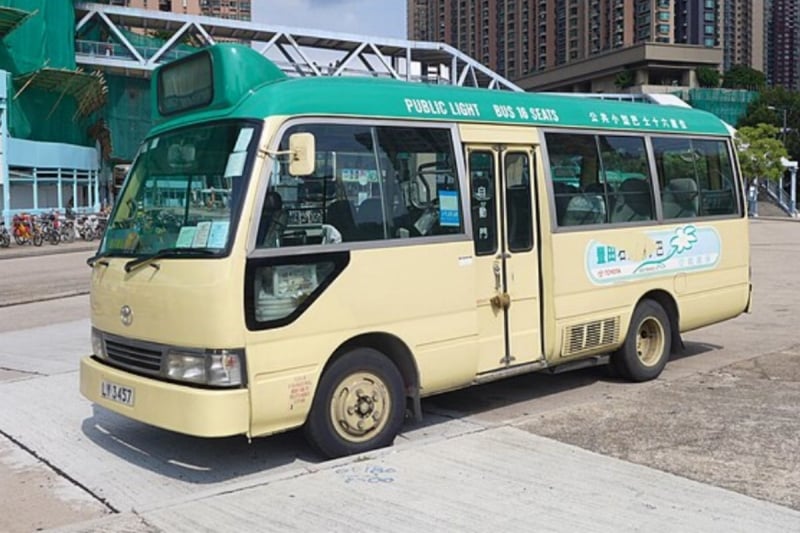
Image Credit: Wikimedia Commons
Minibuses carry up to 19 passengers and offer a faster, more local option. Green minibuses run on fixed routes with set fares, while red minibuses operate more freely, with flexible routes, no fixed stops, and cash payments upon alighting. Red minibuses may not always have signage in English, so they can be tricky to navigate if you’re unfamiliar with the area.
Tripzilla Tip: If you’re unsure about your stop, green minibuses or regular buses are the safer bet.
Also read: Free Ferry and Bus Rides From Hong Kong to Macao for Tourists
Taxis: Convenient, but mostly cash-based
Taxis are easy to find across most of Hong Kong and are a convenient option for door-to-door travel, especially if you’re carrying luggage or heading out late at night. All taxis are metered, regulated, and air-conditioned, with fares starting from HK$27 for the first 2km and increasing with distance and waiting time.
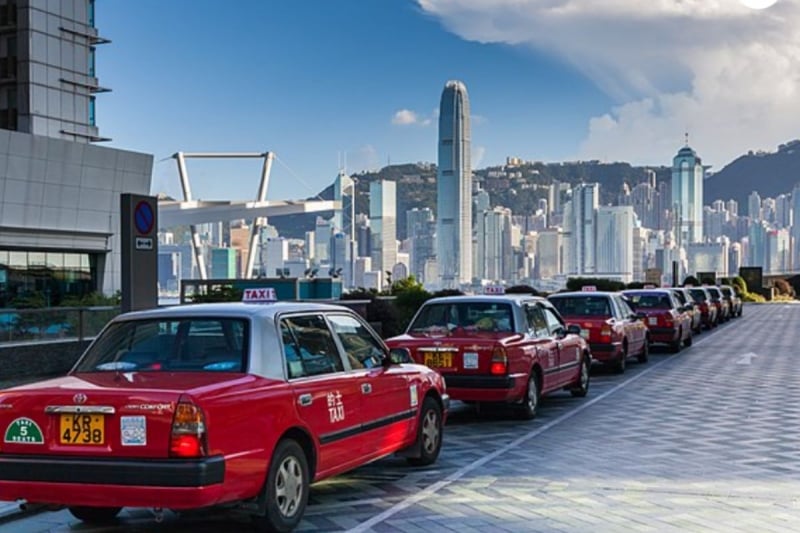
Image Credit: Wikimedia Commons
Just like at the airport, taxis in Hong Kong are colour-coded by region: red taxis operate throughout most urban areas, including the airport, Kowloon, and Hong Kong Island; green taxis serve the New Territories; and blue taxis are limited to Lantau Island. While some taxis now accept Octopus, credit cards, or mobile wallets, many still operate on cash so it’s best to carry small notes just in case.
You can usually hail a taxi on the street unless you’re in a restricted area. During peak hours or in busier districts, taxi stands near malls, hotels, and transport hubs are often more reliable.
Tripzilla Tip: Always ask for a receipt after your trip.
Also read: Exploring Hong Kong by Public Transport: What You Should Know
Final thoughts

Image Credit: NithidPhoto via Canva Pro
Hong Kong’s transport system does more than just move people; it shapes how the city is experienced. Whether you’re gliding underground on the MTR, catching the breeze on the upper deck of a tram, or watching the skyline shift from a ferry, getting around becomes part of the travel experience itself. It’s fast when you need it to be, and surprisingly scenic when you slow down. Once you get the hang of it, the city opens up, one smooth connection at a time.




